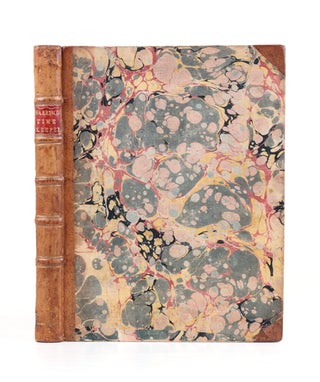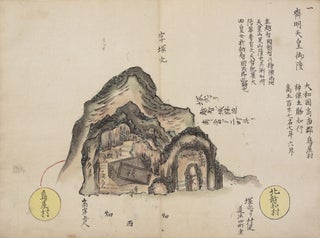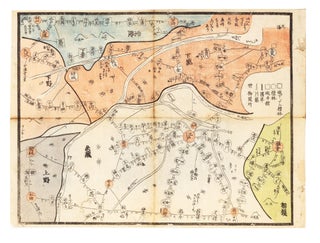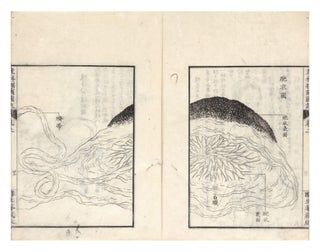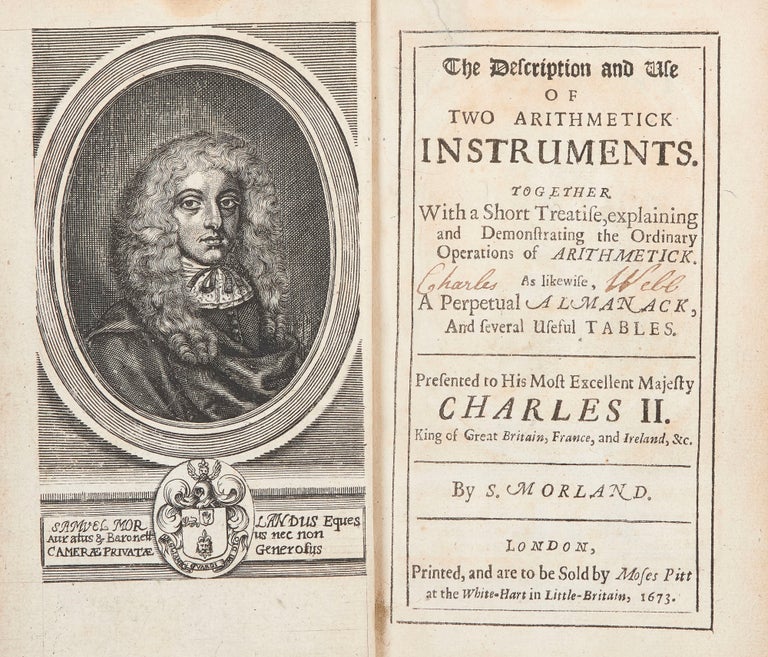
A British Mechanical Calculator
The Description and Use of Two Arithmetick Instruments. Together With a Short Treatise, explaining and Demonstrating the Ordinary Operations of Arithmetick. As likewise, a Perpetual Almanack, and several Useful Tables.
A total of 26 engravings: frontis. port., ten engraved plates pasted on (four folding, two with the extended portion of the plates replaced in excellent facsimile), four engraved illus. in the text, two engraved plates (one folding), & 9 further engravings following A3. 3 p.l., 1-6 leaves, [leaf 7, which contains four engraved images marked A-D, as in early issues, has been cut up & the images have been pasted on the blank versos of A8, B1, B2, & B3], [8]-10 numbered leaves, 11-24, 24-29, 29-49, 48-78 (all sequences with frequent mispaginations), [4], 1-5, [28], 16 pp. Small 8vo, orig. black morocco (joints at head a little rubbed, upper joint partly cracked), sides panelled in gilt, spine gilt. London: M. Pitt, 1673.
First edition of one the most maddening of all the great British science books: every copy is different, and there seems to be no surviving “ideal” copy (even the ESTC, after considerable head-scratching, says the “structure is quite uncertain;” clearly they were defeated by various copies’ complexities). This copy, bound in contemporary black morocco, is from an early issue and unusually complete (see below). It was clearly purchased “new” shortly after the book’s publication and is as “original” a copy as could be, in its original luxury binding. It is the most complete copy we have seen on the market.
This is the first book on a mechanical calculator written in English, and the first separate work on the subject after Napier’s Rabdologiae of 1617. There was little else in English on calculating instruments for more than 150 years, until the publication of Babbage in 1827.
This book describes two “arithmetick instruments”: the first is Morland’s adding machine, which was a modification of Pascal’s calculator. The second instrument is Morland’s “multiplier,” developed in 1666 and operated on the same principle as Napier’s bones.
Morland (1625-95), also describes in the addendum to the present book a “Perpetual Almanac.”
Virtually every copy of Morland’s Description is made up somewhat differently; this has the very rare three leaves of “An Explanation of the Perpetual Almanack” (pages 1-5) in the appended texts. This copy also includes the commonly lacking portrait, and the very rare F8, missing in most copies. What could be G8, bound after G1 (we have counted it as a plate), may in fact be the engraved title of the “Perpetual Almanack.”
Fine copy, preserved in a red morocco-backed slip-case, from the library of Robert B. Honeyman IV (sale Sotheby’s London, 12-13 May 1980, lot 2257). Contemporary signature of Charles Webb on title. Two of the paste-on folding plates have their “flaps” renewed in excellent facsimile.
❧ Taylor, The Mathematical Practitioners of Tudor & Stuart England 1485-1714, no. 358. Tomash & Williams M132.
Price: $30,000.00
Item ID: 6763

